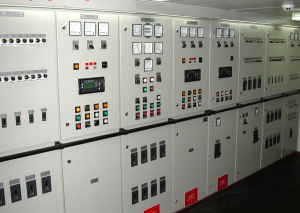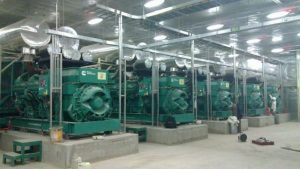Home
- Construction of prefabricated houses and factories
- Electronic Solar Power
- Fire alarm system and equipment
- Equipment Industrial
- Air Conditional
- Generator
- Generator Accessories
- Perkins Filter and Space Part
- Doosan Filter and Space Part
- Mainternancy, Repair of generators
- Cable Trunking
- ATS Controller
- Charger Aska and Accu
- Electric cabinets, control cabinets
- Soundproofing bin of generator
- Soundproofed generator room
- Pipes, chimneys, damper generators
- Datakom Controller
- Control panel Comap InteliLite
- Deepsea Controller
- Filter and Accessories Generator
- Main Filter
- Filter Fleetguard
- Perkis Filter
- Filter Donaldson
- Oil tank box
- Fuel valve
- Electric cabinets, control cabinets
- Oil pipe for generator
- Pump Diesel
- Daily Tank Fuel
- Air conditioner accessories
Synchronous two generators (synchronize)
Synchronization of two generators: Due to the increasing demand for electricity, it is common to have multiple generators of equal capacity or different capacities in parallel, Specialists must master each principle of synchronous procedures, and the form of use at each station is different or the same.
There are many ways to synchronize and call load different so often people apply the same method for each machine in the machine or multiple machines, often the problem of lack of load, the other machine starts to call each machine or run several machines. responsive load.
On the issue of calling the machine to run, people apply the technique as using Deepsea or CoMap, Datakom to air.
On the harmony for each machine often the same voltage, speed and the same frequency, the electronic system security and the harmony of each other talking about the actual set of parallel to the parallel Generators come together electronically.

In the past, people used to mix electric generator by manual method or called lighting is to use 02 lighting system for 02 generators if using air conditioner 02 when the system balance , all lights are in harmony mode.
Today, the system uses a self-weighing system and mixes together, and extends the caller’s reach because of lack of load or shutdown due to overload.
In principle, when synchronizing the machines together, the capacity is calculated for 4 machines, and usually the system will have 5 machines because one machine is ready in standby mode if one of the four machines is damaged, the machine number 5 will work.
1. What is a parallel generator system?
A generator system works in parallel when there are multiple machines at the same level for a load or a common load system.

This system is used to increase the power supply to the system (power plant, national grid, …), because the capacity of a generator is smaller than the load capacity required.
2. What conditions do the generators work in parallel?
Generators that want to work in parallel must meet the following basic requirements:
– The voltages of the generators must be the same: usually the voltage deviation of the machines shall not be greater than 5%
– The frequency of the transmitter must be equal: if not equal, there will be no load distribution phenomenon on the machine
– The order of phases of the machines must be the same.
In addition to the above two conditions, in order for the system to work stably, safety should be equipped with:
– Voltage and frequency adjusting devices to adjust the load division (P, Q) for the units;
– Measurement and protection for each machine and for the system.
3. What is Synchronize? Synchronous synchronization is the process by which individual machines or systems work together to work together (or parallel).
4. What is the timing of synchronization? It is a good time to close the switchgear that allows the delivery of separate workstations or systems to work in parallel (or parallel)
5. What are the conditions of synchronization?
– The two systems must have the same frequency, voltage and phase order.
– Two systems must have the same phase, the phase difference at the time of closing the switch directly affects the magnitude of the electric current by running in the generator set.
6. What is the synchronize system? Synchronization system is a system that performs tasks to send generators or systems to work in parallel.
7. What is the function of synchronous system?
– Determine synchronization time.
– Ordered to operate the switchgear (closed when appropriate and cut out when dangerous).
– protection of the transmitter (minimum over current protection, reverse power protection) and system.
– Control the load sharing between machines.
8. Can any unit be synchronized?

As mentioned above, the generator needs to adjust the two most important parameters: frequency (F) and voltage (U). The standard is as follows:
In addition, the diesel engine must have a fuel control mechanism (speed) to achieve the desired frequency (EFC – Electronic Fuel Control)
STRUCTURE
Typical structures of a parallel standby power system:
– Two or more machines working in parallel
– Two or more machines working in parallel with the ATS system
– A machine working parallel to the grid
– Two or more machines work in tandem with each other and with the grid
1. Two or more machines working in parallel.
This system is used when there is more than one generator in the power supply for a common load.
– This configuration allows you to select any one or more machines in the system according to the actual load demand (can be done automatically or from the operator)
– Transfer from one machine to another without power loss.
System configuration includes:
Two or more generators have all the necessary configurations to work in parallel
Each generator has a synchronous synchronous controller, including:
The U-F regulator holds the load sharing function
You Might Also Like

STC Technology Vietnam Co., Ltd.
To thank the customer heart. We constantly improve our experience and knowledge to give our customers peace of mind and trust when assigning tasks to us.
Contact us
F1, Packsimex Tower, 52 Dong Du Str, Bengnhe .W, 1 Dis, Hochiminh City
0911.77.08.78 - 0907.526.268
sales.247dichvu@gmail.com
sales.247dichvu@gmail.com
STC VIET NAM © 2017 stc-vn.com. All rights reserved.
Design by: https://stc-vn.com/
Leave a Reply